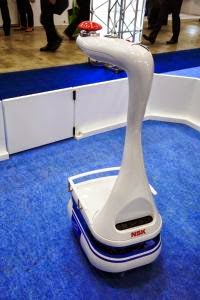Empress Michiko celebrated her 80th birthday on Monday. In a statement distributed to media by the Imperial Household Agency, the empress said she hoped the world could find peace ahead of the 70th anniversary of the end of World War II next year.
“I believe it is important for all of us today who are enjoying the benefits of peace to continue to make every effort to nip the buds of conflict and suffering both in Japan and abroad, and to always aspire strongly towards peace in the world,” the empress said.
During the past year, the empress carried out duties in her official capacity on 314 occasions. She said it has given her joy that the emperor was able to celebrate his 80th birthday in good health last year, thanks to the thoughts and prayers of countless number of people. “In the more than 50 years that I have spent by his side, His Majesty has always remained modest and humble, and he has constantly guided me and the children, at times strictly, but always with a generous heart. This, I believe, is what has allowed me to come this far,” the empress said.
Referring to her own children, she said: “As parents, we tend to think that our children will always be with us, but as the years passed, all three of our children, each having found a partner in life, left our household, one by one. They are much different in character but all very dear to me. Though I thought I have given each my love and affection and raised them with loving care, I suppose there are probably many things I could have done more. I am grateful, however, that the children have made their own efforts to compensate for my inadequacies and grown into mature adults.”
The empress said she and the emperor had been saddened by this year’s disasters.
“This year saw much to celebrate, but we also experienced many heartbreaking events, such as torrential rainstorms and a volcanic eruption. I offer my prayers for the souls of the victims and give my thoughts to the deep sadness of those who have lost family members and the pain of those whose family members have not yet been found. And to those who have faced endless difficulties on the volcano while helping and searching for the victims, prefectural officials, members of the Self-Defense Forces, firefighters, police officers, medical personnel, and the health workers who have been constantly at the side of the families awaiting news of their loved ones, I also express my gratitude and deepest respect.”











































